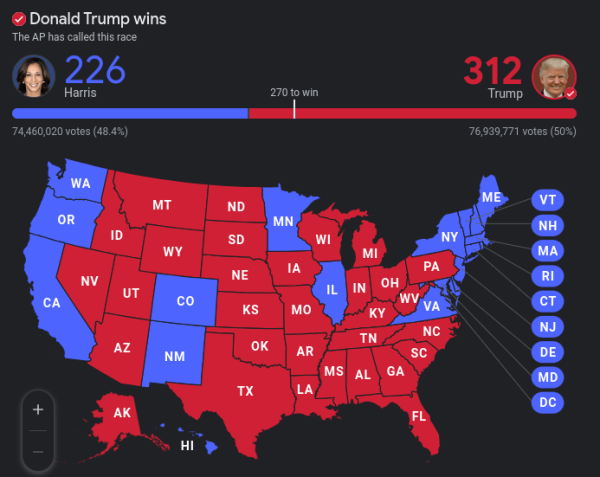Electoral College vs Popular Vote
On the night of November 8, 2016 Donald Trump was elected President of the United States of America. In the next couple of weeks more information would come out about the exact numbers that got him elected. Hillary Clinton, his Democrat opponent clocked in at 65,844,954 votes and Trump ended up with, 62,979,879 total votes, Hillary Clinton had 232 Electoral College votes and Trump had 302 according to an official CNN report of the night. The answer lies in the Electoral College, something our Founding Fathers established in the Constitution. The popular vote does not elect the President, the Electoral College does.
There are arguments for and against the Electoral College, but it is important to understand how it came about, why it came about, and how it functions in our present government and elections. In Section one of Article ll, the Constitution states, “Section 1. The executive Power shall be vested in a President of the United States of America. He shall hold his Office during the Term of four Years, and, together with the Vice President, chosen for the same Term, be elected, as follows. Each State shall appoint, in such Manner as the Legislature thereof may direct, a Number of Electors, equal to the whole Number of Senators and Representatives to which the State may be entitled in the Congress: but no Senator or Representative, or Person holding an Office of Trust or Profit under the United States, shall be appointed an Elector.” In an additional 10 amendments more specifics are laid out about the duties, requirements, and purposes of being an elector.
There are a total of 538 Electoral College votes and in order for a candidate to win the election they have to win at least 270 of those votes. Each state has a certain number of votes and whichever candidate receives the majority of a state’s votes receives their Electoral College votes.
Though the Electoral College may seem unfair and unjust to some, and they have a right to disagree with it, it is still important to understand how it works and why it was established. In the words of James Madison, “Sacrifice to its ruling passion or interest both the public good and the rights of other citizens. A republic, by which I mean a government in which the scheme of representation takes place, opens a different prospect, and promises the cure for which we are seeking.” This fear would later be dubbed by Alexis de Toquerville as “tyranny of the majority, and that’s what the Electoral College was designed to protect against.

![Photo Credit; Miller, Kim. “City of Asheville prepares for a weekend of winter weather.” City of Asheville prepares for a weekend of winter weather [Ashville], 10 February 2023, https://www.ashevillenc.gov/news/city-of-asheville-prepares-for-a-weekend-of-winter-weather/. Accessed 06 January 2025.](https://binghamprospector.org/wp-content/uploads/2025/01/Screenshot-2025-01-14-7.54.38-AM.png)

